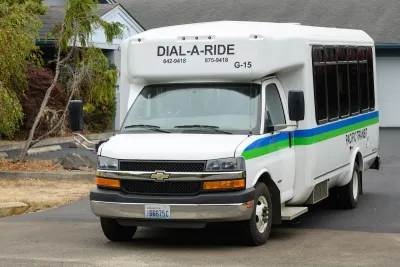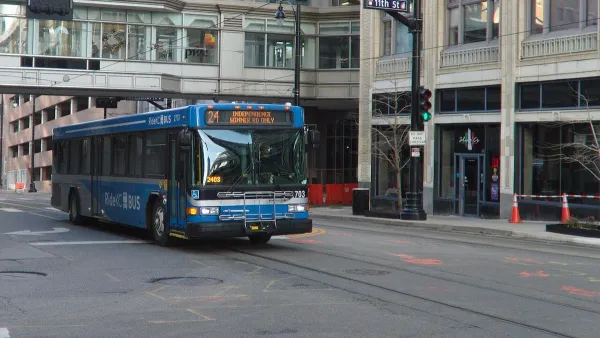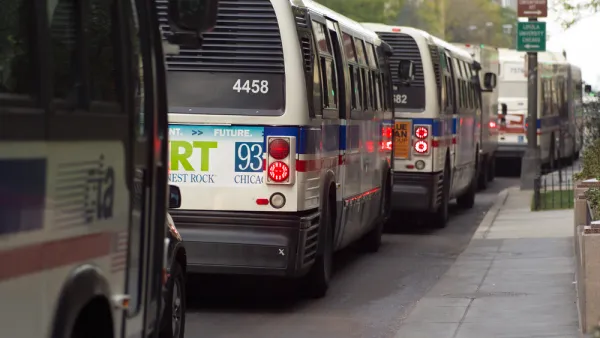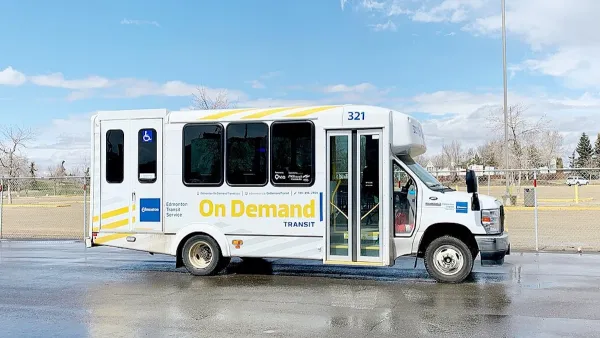On-demand services can’t scale successfully without massive government subsidies, and could obscure the impacts of car-centric sprawl.

As more cities opt for on-demand transit services, often labeled ‘microtransit,’ to supplement or even replace fixed-route transit, David Zipper highlights one major problem with relying too heavily on microtransit.
For Zipper, the surface benefits of microtransit are obvious. “The allure of cheap, responsive, door-to-door transit service is seductive, particularly for public leaders eager to ‘reimagine’ fixed-route bus service that fails to inspire.”
The hard part comes when public officials try to scale microtransit service without breaking their budget, limiting how many trips people can take, or morphing into something that looks a lot like fixed-route service.
Whereas fixed-route service offers economies of scale—“As long as empty bus seats are available, each new rider brings new revenue to the transit agency while incurring minimal added costs, thereby reducing the subsidy required for each trip”—“An increase in microtransit trips can quickly overwhelm the system’s capacity, in part because vans have only a handful of seats, but especially because passengers’ itineraries often do not overlap.”
Ultimately, the system doesn’t work as public transit without significant public subsidies. “In Los Angeles, for example, a microtransit ride costs passengers only $1, but each one receives a $42 subsidy.”
Additionally, Zipper notes, microtransit “shields people from the inefficiency of car-centric land use.” Ultimately, “For the sake of the planet, as well as efficiency, transportation should be more expensive in places that are difficult to access without a car.”
FULL STORY: On-Demand Microtransit Can’t Escape This Big Problem

Analysis: Cybertruck Fatality Rate Far Exceeds That of Ford Pinto
The Tesla Cybertruck was recalled seven times last year.

National Parks Layoffs Will Cause Communities to Lose Billions
Thousands of essential park workers were laid off this week, just before the busy spring break season.

Retro-silient?: America’s First “Eco-burb,” The Woodlands Turns 50
A master-planned community north of Houston offers lessons on green infrastructure and resilient design, but falls short of its founder’s lofty affordability and walkability goals.

Test News Post 1
This is a summary

Analysis: Cybertruck Fatality Rate Far Exceeds That of Ford Pinto
The Tesla Cybertruck was recalled seven times last year.

Test News Headline 46
Test for the image on the front page.
Urban Design for Planners 1: Software Tools
This six-course series explores essential urban design concepts using open source software and equips planners with the tools they need to participate fully in the urban design process.
Planning for Universal Design
Learn the tools for implementing Universal Design in planning regulations.
EMC Planning Group, Inc.
Planetizen
Planetizen
Mpact (formerly Rail~Volution)
Great Falls Development Authority, Inc.
HUDs Office of Policy Development and Research
NYU Wagner Graduate School of Public Service




























